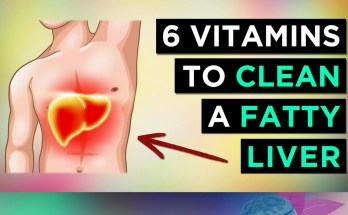As we age, maintaining muscle mass becomes increasingly important for overall health and mobility. Sarcopenia, the natural decline in muscle mass that occurs with aging, can lead to reduced strength, increased risk of falls, and a lower quality of life. However, with the right strategies, you can preserve and even rebuild muscle as you grow older. Below are eight proven ways to maintain your muscle mass and stay strong throughout your life.
1. Prioritize Progressive Resistance Training (PRT)
Progressive resistance training (PRT) is one of the most effective methods for preserving and building muscle as you age. This type of exercise involves gradually increasing the weight, repetitions, or intensity of your workouts over time. By consistently challenging your muscles, PRT stimulates growth and prevents plateaus in strength gains.
Studies have shown that older adults who engage in PRT experience significant increases in lean body mass. For example, a meta-analysis published in Medicine & Science in Sports & Exercise found that men aged 50 to 83 gained an average of 2.4 pounds of muscle through regular resistance training.
To get started with PRT:
- Begin with light weights or resistance bands if you’re new to strength training.
- Focus on compound movements like squats, deadlifts, push-ups, and rows.
- Gradually increase the weight or resistance as your strength improves.
- Aim for at least two to three sessions per week.
2. Consume Adequate Protein Daily
Protein is essential for muscle repair and growth. As you age, your body’s ability to synthesize protein decreases due to a phenomenon called anabolic resistance. To counteract this effect, older adults need more protein than younger individuals—especially if they are engaging in resistance training.
Experts recommend consuming 1 to 1.3 grams of protein per kilogram of body weight daily for older adults involved in physical activity. For example:
- A 175-pound man (about 79 kilograms) would need between 79 and 103 grams of protein per day.
To meet these requirements:
- Include high-quality protein sources such as lean chicken breast (31 g per 3.5 ounces), salmon (24 g per 3.5 ounces), Greek yogurt (17 g per 6 ounces), skim milk (9 g per cup), or cooked beans (18 g per cup).
- Consider supplementing with protein powders if you’re unable to meet your needs through food alone.
- Distribute your protein intake evenly across meals to maximize muscle synthesis.
3. Incorporate Functional Exercises into Your Routine
Functional exercises mimic everyday movements like bending, lifting, pushing, or pulling. These exercises not only help maintain muscle but also improve balance and coordination—key factors in preventing falls as you age.
Examples include:
- Bodyweight squats
- Step-ups
- Farmer’s carries
- Plank variations
Incorporating functional exercises into your routine ensures that you’re building practical strength that translates into real-life activities.
4. Stay Active Throughout the Day
While structured workouts are important for maintaining muscle mass, staying active throughout the day also plays a crucial role in preventing sedentary-related muscle loss.
Simple ways to stay active include:
- Taking short walks after meals
- Using stairs instead of elevators
- Stretching during breaks from sitting
- Gardening or doing household chores
These small actions add up over time and contribute to better overall fitness.
5. Optimize Post-Workout Nutrition
What you eat after exercising significantly impacts recovery and muscle growth. Consuming a meal or drink with a carbohydrate-to-protein ratio of about three-to-one or four-to-one within 30 minutes post-workout helps replenish glycogen stores while promoting muscle repair.
For example:
- An ideal post-workout snack could be an 8-ounce glass of chocolate milk containing approximately 22 grams of carbs and 8 grams of protein. This combination supports recovery while maximizing gains from your workout efforts.
6. Address Hormonal Changes
Testosterone levels naturally decline with age—a factor that contributes to sarcopenia since testosterone plays a key role in stimulating protein synthesis and promoting muscle growth.
While testosterone replacement therapy may be an option for some men under medical supervision, it comes with potential risks and side effects. Instead:
- Focus on natural ways to support healthy hormone levels through regular exercise (especially resistance training), adequate sleep, stress management techniques like meditation or yoga, and a balanced diet rich in healthy fats such as avocados or nuts.
7. Avoid Excessive Alcohol Consumption
Excessive alcohol intake can interfere with protein synthesis and hinder recovery from exercise—both critical factors for maintaining muscle mass as you age.
To minimize its impact:
- Limit alcohol consumption according to guidelines: no more than two drinks per day for men or one drink per day for women.
By reducing alcohol intake alongside other healthy habits mentioned here—you’ll create optimal conditions for preserving lean tissue long-term!
8: Get Enough Sleep Every Night
Sleep is when much-needed repair processes occur—including those related specifically toward rebuilding damaged fibers following intense physical activity sessions! Adults should aim getting between seven-nine hours nightly uninterrupted rest whenever possible ensuring maximum benefit derived restorative properties associated deep slumber cycles themselves!
Tips improving quality duration restful periods include establishing consistent bedtime routines avoiding caffeine late afternoon evenings keeping bedroom cool dark quiet conducive relaxation purposes alike!
Top Three Authoritative Sources Used:
- Harvard Health Publishing – A trusted source offering evidence-based insights into health topics including aging-related issues like sarcopenia prevention strategies backed scientific research findings!
- Medicine & Science Sports Exercise Journal – Peer-reviewed publication featuring cutting-edge studies exploring benefits progressive-resistance-training interventions elderly populations worldwide!
- Nutrients Journal – Esteemed academic resource providing detailed analyses dietary requirements optimizing outcomes among physically-active seniors emphasizing importance adequate-protein-intake
Here’s If You Love to Read More: 12 Warning Signs Your Brain Health May Be Declining
Here’s If You Love to Watch Movie: MyFlixerHD





